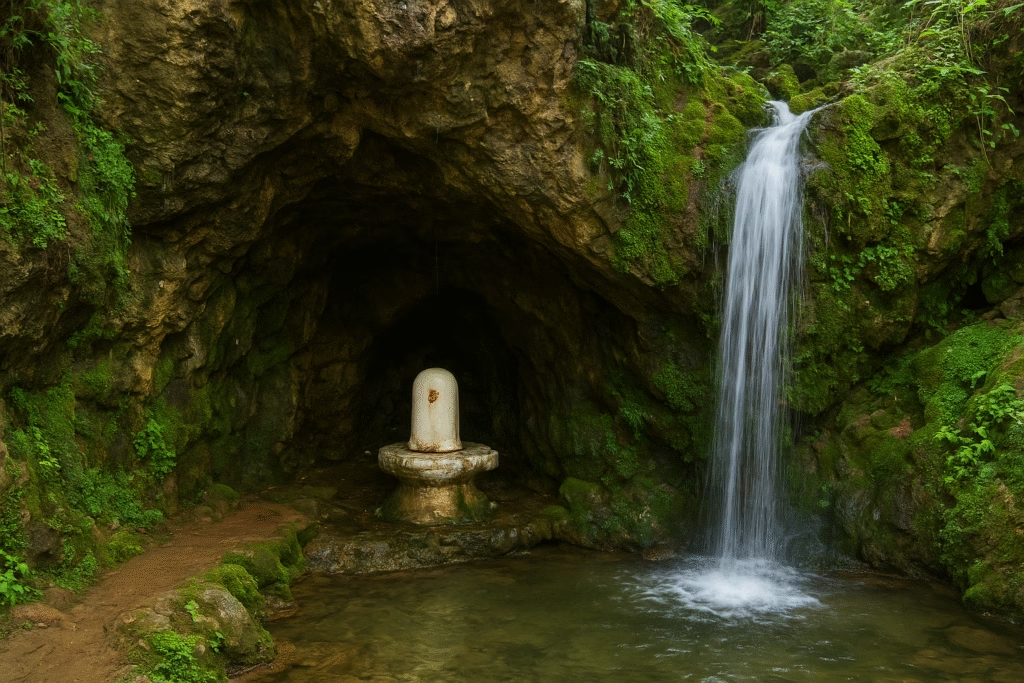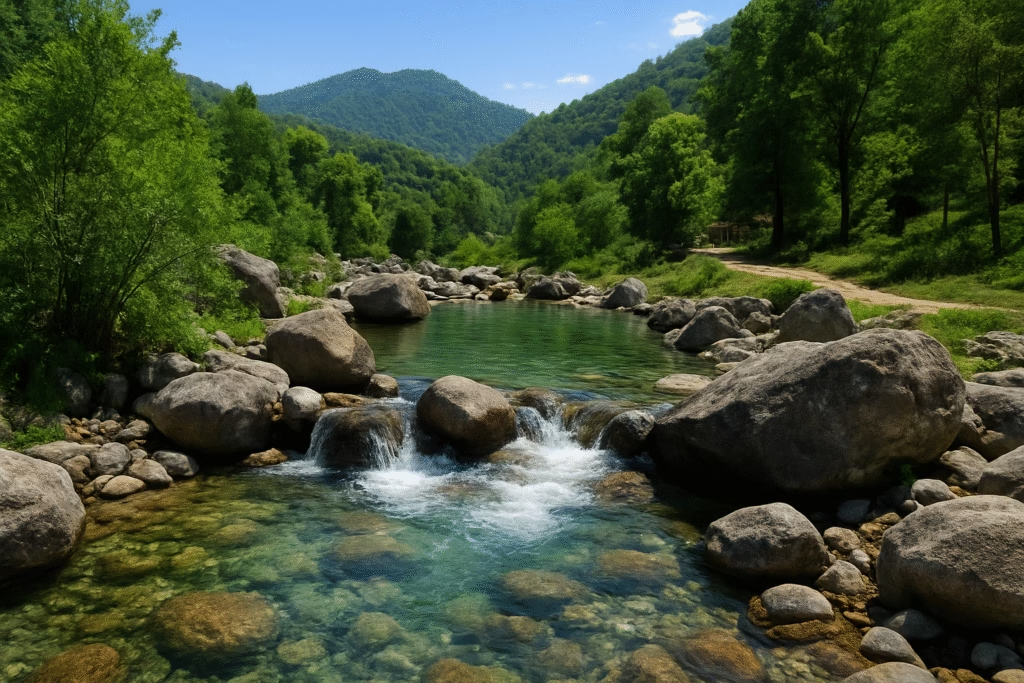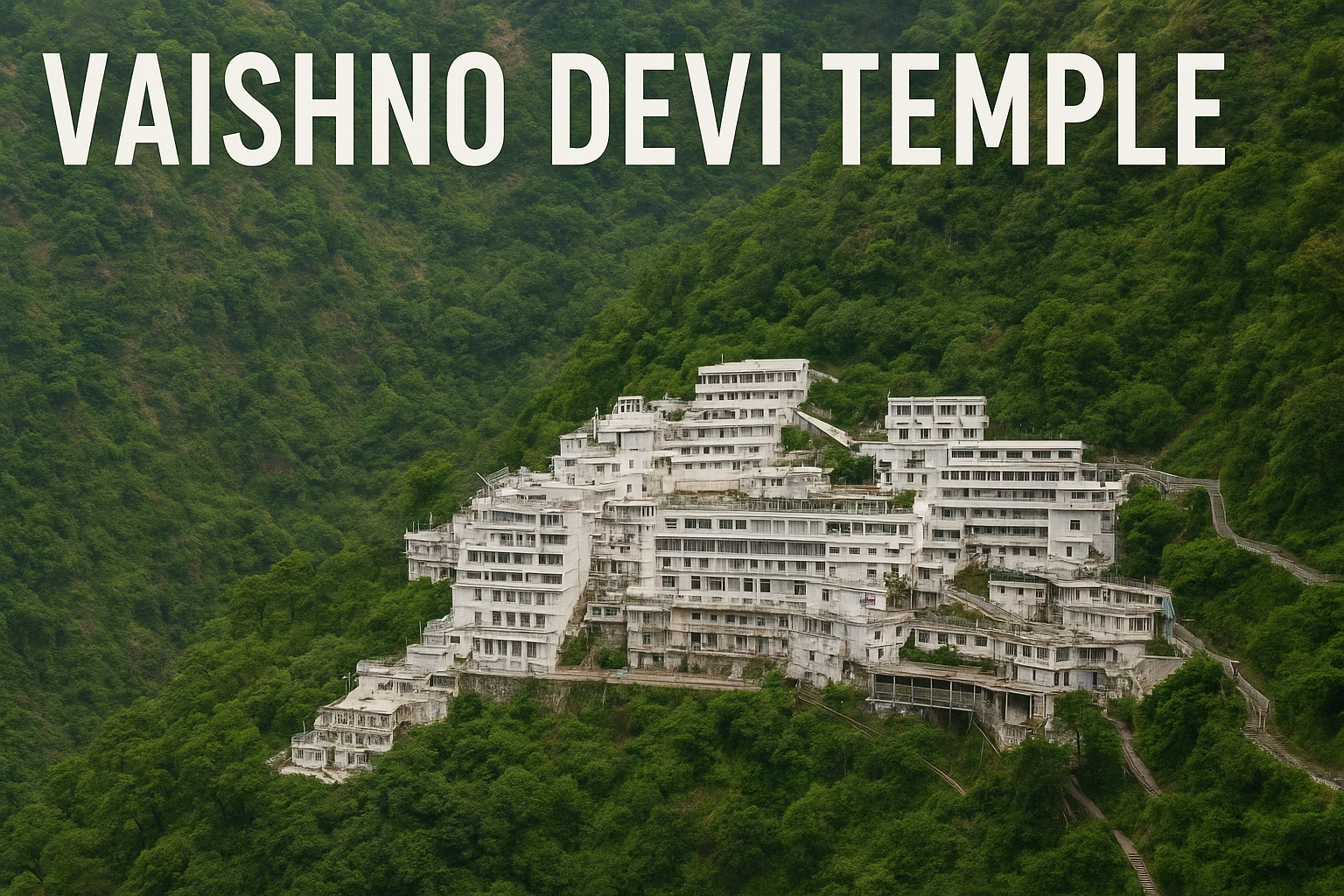There are some journeys that go beyond destinations — they touch your soul.
The New Delhi to Vaishno Devi Yatra is one of those. Whether you’re a spiritual seeker, an adventure lover, or just someone looking for peace in the mountains, this journey through the Trikuta Hills of Jammu is an experience that stays with you forever.
In this 2026 travel guide, I’ll walk you through everything — from the best routes and transport options to the trek experience, local tips, and my favorite spots around Katra.
The Call of the Goddess
Every traveler has a story about how their Vaishno Devi yatra began. For most, it’s not a planned trip — it’s a calling.
Situated at an altitude of nearly 5,200 feet, the Vaishno Devi Temple is one of the holiest shrines in India, where the Goddess is believed to fulfill the wishes of her devotees.
The shrine sits inside a natural cave, and to reach it, one must undertake a 13-kilometer trek from Katra — a journey filled with chants of “Jai Mata Di”, glowing lights, and faith that lights up every heart.
Getting There: From New Delhi to Katra
There are several ways to reach Katra, the base camp of Vaishno Devi, from New Delhi. Here’s how to plan your route smartly.
By Train – The Most Comfortable Way
If you enjoy overnight journeys and mountain views through your window, the train route is the best option.
- Nearest Station: Shri Mata Vaishno Devi Katra (SVDK)
- Distance: Around 650 km
- Travel Time: 8–10 hours
Top Trains:
- Vande Bharat Express (fastest and most modern)
- Shri Shakti Express
- Uttar Sampark Kranti Express
All these trains drop you directly at Katra Station, which is barely a few minutes away from the main Yatra starting point.
By Flight – Quick and Easy
For those short on time, take a direct flight from New Delhi to Jammu Airport (about 1 hour 15 minutes).
From there, taxis and shared cabs are easily available to Katra, which is roughly 50 km away and takes around 90 minutes.
It’s a comfortable, time-saving option — perfect if you’re traveling with family or senior citizens.
By Road – The Scenic Adventure
If you love road trips, this one’s worth it!
The Delhi to Katra road trip via NH44 takes about 12–14 hours, passing through Panipat, Ambala, Ludhiana, Jalandhar, and Pathankot before reaching Jammu.
The roads are smooth, the landscapes are stunning, and the small dhabas along the way serve some of the best parathas you’ll ever taste.
The Trek from Katra to Bhawan – 13 km of Faith
Once you reach Katra, the real yatra begins.
From the base camp, the 13-km uphill trek takes you through stops like Ban Ganga, Charan Paduka, and Ardhkuwari, finally leading to the Bhawan, the holy cave temple.
Here’s how you can make the journey easier:
| Mode | Distance | Time | Cost | Experience |
|---|---|---|---|---|
| On Foot | 13 km | 4–6 hrs | Free | Pure and traditional way |
| Pony/Mule | 13 km | 3–4 hrs | 500–1000 | Comfortable for elderly |
| Palanquin | 13 km | 4–5 hrs | 3000–4000 | Best for senior citizens |
| Battery Car | 6 km (Ardhkuwari–Bhawan) | 1 hr | 350 | Easy and budget-friendly |
| Helicopter | 2.5 km (Sanjichhat–Bhawan) | 8 mins | 1830 (one way) | Luxury meets devotion |
The trek is beautifully lit at night and lined with food stalls, resting sheds, and clean washrooms. Don’t rush — take your time and let the chants and energy carry you forward.
Helicopter Ride – A Bird’s-Eye Blessing
If you wish to experience something truly divine, try the helicopter ride from Katra to Sanjichhat.
The short flight offers stunning aerial views of the Trikuta Hills and lands you just 2.5 km away from the main Bhawan. From there, it’s a comfortable walk of 25–30 minutes.
Pro Tip: Book your helicopter tickets well in advance, especially during Navratri or peak seasons. Carry an original ID proof and reach the helipad at least one hour before departure.
Where to Stay in Katra
Katra has everything — from simple pilgrim lodges to elegant resorts. Here are a few highly-rated options to consider:
- Hotel The White – Comfortable, mid-range stay with mountain views.
- KC Residency – Great for families, with in-house dining and modern rooms.
- Hotel Devi Grand – Ideal for those looking for luxury and spa facilities.
- Niharika Bhawan – Managed by the Shrine Board, clean and affordable.
Pro Tip: If you’re visiting during festivals, book your stay at least 2–3 weeks in advance.
Best Time to Visit Vaishno Devi
| Season | Months | Weather | Highlights |
|---|---|---|---|
| Winter | Nov–Feb | Cold & peaceful | Less crowd, serene atmosphere |
| Summer | Mar–Jun | Pleasant | Ideal for families and trekking |
| Monsoon | Jul–Sep | Humid & green | Scenic views but occasional landslides |
| Navratri | Twice a year | Festive | Vibrant celebrations, heavy rush |
If you prefer calm and less crowd, January to March is the best time.
If you enjoy festive energy, visit during Navratri — the aura is truly electric.
Nearby Attractions You Shouldn’t Miss
Once your darshan is complete, extend your trip to explore nearby gems:
Patnitop (Jammu & Kashmir)

Patnitop is a beautiful hill station in the Udhampur district of Jammu and Kashmir, located at an altitude of 2,024 meters. Surrounded by pine forests and snow-capped peaks, it offers breathtaking views and peaceful vibes.
- Location: 110 km from Jammu, 80 km from Katra
- Best Time to Visit: April–June (pleasant), Dec–Feb (snowfall)
- Major Attractions:
- Nathatop: Paragliding & snow views
- Sanasar Lake: Boating & camping
- Madhatop: Skiing in winter
- Naag Temple: 600-year-old shrine
- Activities: Trekking, horse riding, skiing, paragliding
- Food: Rajma Chawal, Kalari cheese, Kashmiri Kehwa
It’s an ideal getaway for nature lovers and adventure seekers looking for peace, snow, and scenic beauty.
Shiv Khori – The Sacred Cave of Lord Shiva

Shiv Khori is a famous cave shrine dedicated to Lord Shiva, located in the Reasi district of Jammu and Kashmir, about 70 km from Katra (the base of Vaishno Devi). The name “Shiv Khori” literally means ‘the cave of Lord Shiva’, and it’s one of the most revered pilgrimage sites in North India.
The cave is around 200 meters long, 1 meter wide, and 4 meters high, naturally shaped like Shiva’s Damaru (holy drum). Inside, there is a naturally formed Shivling believed to be Swayambhu (self-manifested). The cave also has natural carvings resembling Goddess Parvati, Lord Ganesha, and Nandi, adding to its divine atmosphere.
The journey to the shrine involves a 3.5 km scenic trek from Ransoo village, the base camp. The route is surrounded by hills and offers breathtaking views of the Trikuta range. Pilgrims chant “Bam Bam Bhole” and “Har Har Mahadev” as they climb, creating a spiritual and energetic vibe.
The Shiv Khori Mela, held every year around Maha Shivratri, attracts thousands of devotees from across the country. During this time, the entire area comes alive with religious songs, processions, and spiritual celebrations.
Besides religious importance, Shiv Khori is also admired for its natural beauty — with green valleys, limestone formations, and peaceful surroundings making it a wonderful blend of faith and nature.
In short, Shiv Khori is not just a pilgrimage site but a mystical and serene destination where spirituality meets natural wonder — a must-visit for those traveling near Katra or Patnitop.
Baba Dhansar – A Sacred Gem near Katra

Baba Dhansar is a famous spiritual and scenic site located about 15 km from Katra and 40 km from Jammu, in the Reasi district of Jammu and Kashmir. Nestled amidst green hills and rocky cliffs, this temple is dedicated to Lord Shiva and is deeply connected with a local legend. It is believed that Baba Dhansar, a devotee of Lord Shiva, prayed here for divine help to defeat a demon troubling the villagers. Lord Shiva appeared and destroyed the demon, making this spot a place of great spiritual power.
Highlights of Baba Dhansar:
- Natural Beauty: Surrounded by lush greenery and cliffs, the temple area feels calm and refreshing.
- Sacred Spring & Waterfalls: A clear natural spring flows from the rocks, forming several small waterfalls that join a holy pond. The water is considered sacred and pure.
- Shivling in Cave: Inside a small cave, a Shivling is continuously bathed by natural water droplets, symbolizing Lord Shiva’s divine presence.
- Maha Shivratri Festival: The temple becomes lively with thousands of devotees offering prayers and lighting diyas during this festival.
With its blend of mythology, nature, and peace, Baba Dhansar is a perfect spot for both spiritual seekers and nature lovers visiting the Katra–Reasi region.
Jhajjar Kotli – A Peaceful Nature Retreat Near Jammu

Jhajjar Kotli is a beautiful picnic and tourist spot located on the Jammu–Srinagar National Highway, about 15 km from Katra and 35 km from Jammu. It is known for its crystal-clear water stream, which flows from the Himalayan hills and creates small natural pools surrounded by rocks and greenery.
The place is ideal for family picnics, nature walks, and photography, offering a peaceful escape from city life. Tourists can relax by the cool waters, enjoy the scenic mountain views, and experience the refreshing environment. Managed by the Jammu and Kashmir Tourism Department, Jhajjar Kotli also has a tourist complex with basic facilities for visitors.
Calm, clean, and surrounded by nature, Jhajjar Kotli is a perfect stop for travelers heading towards Vaishno Devi or Patnitop.
Travel Tips from a Frequent Yatri
- Register your yatra at the Katra counter before starting.
- Carry only essentials — luggage lockers are available at the base.
- Wear good-quality shoes and warm clothes at night.
- Keep a refillable water bottle; avoid plastic waste.
- Try to start the trek in the early morning or late evening for cooler weather.
- Respect the sacredness of the place — no loud music or littering.
Final Thoughts
The New Delhi to Vaishno Devi journey isn’t just about reaching a temple — it’s about finding peace in every step.
As you walk through the glowing pathway, surrounded by chants of “Jai Mata Di”, the worries of everyday life seem to fade away.
Whether you’re a first-time visitor or a regular devotee, 2026 could be the year to experience this incredible spiritual adventure.
Pack your faith, your camera, and your curiosity — and let the mountains guide you home.
Jai Mata Di

